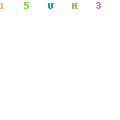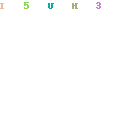A century-old house, 19th century church, 300-year-old temple—north Kolkata hides treasures in its perceived drabness. The past is ever-present here
I am standing at the Chalta Bagan petrol pump on Vivekananda Road, in north Kolkata, with its “I love Kolkata” neon sign. I cross over into the side street, beckoned by the brick-red facade and brown shuttered windows of an elegant three-storeyed house. Built in 1922, it’s aptly called Scarlet Home. Ensconced on the ground floor is the newly opened Jiabharali T. Café, its white painted doors and windows making for a nice contrast. Jutting out above the café door is a Juliet balcony. Perhaps this is what the late urban theorist Jane Jacobs meant when she said: “New ideas need old buildings.”
Old buildings and institutes are aplenty in this neighbourhood, pin code 6, dense with roadside tea stalls with coal-fired stoves and plastic jars filled with biscuits. People sit on benches and stools, quaffing tea from disposable earthen cups while chatting. On the morning after the Fifa World Cup final, I could hear a man, perhaps a Les Bleus supporter, say exasperatedly, “Mbappé aeka ei khelay jachey (Mbappé was literally playing alone).” These tea shops are communal spaces, like the red-oxide rowak—a raised platform in front of traditional houses where people hang around.
Also Read: A debate in Bengali is the ultimate test of fluency
I spent the last two weeks of 2022 in the city and I found myself walking often in this area, keeping to a radius of 4-5km—the more I walked, the more I observed. Like these two large houses, off Abhedananda Road, flanking a narrow lane: one red-brick, the other pink, both with classic green shuttered windows. In the mornings, several windows on the first floor of the red-brick house are open: It is an inexplicably beautiful sight, like a file of students at the school morning assembly. Or an open door revealing a Radha-Krishna thakur bari (house of god)—the outside giving no hint of the vastness inside, the long marble corridor and the fountain in the garden. Or the newspaper vendor rolling up the broadsheet, tying it to the end of the rope hanging down from a third-floor balcony, to be pulled up. Kolkata-6 hides treasures in its perceived drabness; the past is ever-present here.
Of churches, and colleges
With Scarlet Home to your left, the main road behind you, walk down Duff Street to the intersection. Across the road is Duff Church, with its blue walls and grey windows. A plaque reads: November 1848, 1st Sunday, 1st meeting as a congregation. Led by Rev. Alexander Duff (the Church of Scotland’s first missionary to India). On a recent Sunday, around 8.30am, you could see a man playing the violin in the practically empty church. To your right is Sree Sree Jogot Mandir, which gives its year of establishment as (Bengali calendar) 1278 (around 1871). Linger here long enough, and, at around 9.30am, the neighbourhood fills up with the resonant percussion sounds of manjeera (cymbals) and the beating of the gong during the morning prayers at the temple. It’s the same around 6 in the evening. Keeping time above the entrance door of the temple is a wall clock with Charles. Nephew & Co., Calcutta inscribed on it—Charles and Parke Pittar were uncle and nephew, prominent jewellers, watchmakers from 1848-70.
(left) Christ Church; and a traditional house with brick-red facade and shuttered windows.
Straight ahead, after the intersection, is St Margaret’s School, set up in 1871, and further down, on Abhedananda Road, The Paribartan Sarkar Bidyalaya (1928) and Holy Child Institute (1938) sit opposite each other.
Most of the educational institutes are laid out on streets parallel to each other. For instance, in the street next to Duff Church is the sprawling Scottish Church College in Urquhart Square, established in 1830. At the next intersection, on Bidhan Sarani, is the brick-red Christ Church, built in 1839. It rubs shoulders with Bethune College, the first women’s college in India, established in 1879. A marble plaque in the grounds reads: “In sweet memory of our beloved dog Lalu, 1997-July 18, 2014, who protected Bethune School and College during two decades”.
Also Read: Marooned and musty in Kolkata
Opposite Christ Church, on Ramdulal Sarkar Street, is a row of five-six sweet, or mishti, shops. These are not your sparkly, gleaming shops, all glass and marble. As a tourist, you would probably walk right past them. The oldest shop, Girish Ch. Dey & Nakur Ch. Dey, dates back to 1844. They are famous for having supplied Bengali sweets at the wedding of actors Aishwarya and Abhishek Bachchan. My favourites, though, are notun gurer norom pak talsas, lebu sondesh and parijat from Subodh Chandra Mullick. It’s manned by the third generation of three brothers—Amit, Abhijit and Pinku Malik. Amit claims their shop is also over a hundred years old. What’s new is the not-so-innovative names of some of the sweets: Mother India and Sonar Bangla. About 10 minutes walk away is another iconic mishti shop: Ganguram and Sons (1892).
In the evening, after 5, you will find a huge crowd around a stall at the corner of Christ Church. This is Hedua Chat, which gives its date of birth as 1941 and the tag line: “The chat for chat lovers”. The stall takes its name from the Hedua Swimming Club across the road.
Statues and strolls
It’s not unusual to hear of two-three generations of a family having learnt swimming at Hedua, which was set up in 1917. On either side of the pool is a diving board; a walking path runs around it. There is an open space for exercise, cultural events, plenty of benches to sit on and a children’s play area. On one side of the pool are the one-storeyed buildings of the National Swimming Association, the Simula Athletic Club (established in 1936), Central Swimming Club (1917) and the Azad Hind Mahila Samity (1964). Closed for swimming in winter—a pair of ducks has the run of the pool. It’s around 7am, a man is goading his 10-12-year-old son: “Vivekananda bust thekay dorotey shuru kor (start running from Vivekananda’s bust).”
Jiabharali T. Café on Duff Street, located in the 100-year-old Scarlet Home.
Kolkata has a thing for statues; this place is no different. A towering statue of Swami Vivekananda faces away from the pool, overlooking the road. In one corner is a bust of Rajanikanta Sen: “The poet of divine sensibilities (1865-1910)”. A Netaji Subhas Chandra Bose bust has a view of the pool. Someone has etched on its back: “Didu I love you. Dadu I love you.” Exit the pool from the main gate, walk left and at the corner is the seated statue of chemist Butto Kristo Paul (1835-1914), clad in a dhoti and chador. A passer-by greets me with “Jai Shri Ram”, catching me unawares.
A couple of minutes’ walk away is Swami Vivekananda’s ancestral house and cultural centre on Bidhan Sarani Road. If you are lucky enough, you will hear the rattling sound and clang of a metal bell as the occasional tram trundles past. About 10-15 minutes’ walk from here is College Street, or boi para, with its numerous colleges and book stalls. A stone’s throw away are the old traditional markets of Hathibagan and Shreemani Bazar: Thanthania Kalibari, said to be three centuries old, is located in the latter. Stand in front of the Vivekananda Cultural Centre and glance across the road at a red board. It says Chacha’s Hotel, established in 1875. This famous landmark, known for its fowl cutlet, fish fry and more, shut down a few years ago. Only a sign of the times remains.
The morning I am there, a horse carriage goes by. A young girl shouts in excitement, “Goru, goru (cow, cow)”—her two friends burst out laughing. Unlike Delhi, you don’t find cows wandering here on the streets.
A ‘rowak’ outside a house in a lane in north Kolkata
Circling back
It’s Christmas Day, I pass by Jiabharali T. Café. It’s closed till 1pm for a private event. The owner’s wife and college-going daughter allow me to take a look inside as they are setting plates. The menu has an image of the house from 19 June 1965.
I head out to the intersection. Shobha Saha, 88, is sitting on the rowak of her corner house, which has Duff Church in front and Sree Sree Jogot Mandir to its left. “Rowak-ay boshey bhalo lagey, gadi-ghoda jai (Time passes well sitting on the rowak),” says Saha. Gadi-ghoda, or cars and horses, she has seen it all. Pointing to a new apartment building, she mentions that it used to be a horse stable.
Saha has been living in this house since the age of 15, when she got married. As she sorts fresh coriander in a plastic bowl and soaks in the warm sun, she recalls Christmas festivities from long ago. “We used to make chop, cutlet and mangsho (mutton) and the men would fly kites, play cards and fish in pukurs (ponds).” Their house had a pukur too, she reminisces, but over a decade or more ago, it was filled up and built over—our modern life is constantly running out of space. I ask Saha what has changed over the years. “Aaj kal ucchrinkhala baishi hoe gaechey (rowdyness/wantonness has increased now),” she replies.
Also Read: When in Kolkata, eat like a Bengali
Source: https://news.google.com/__i/rss/rd/articles/CBMifGh0dHBzOi8vbGlmZXN0eWxlLmxpdmVtaW50LmNvbS9uZXdzL2JpZy1zdG9yeS90cmF2ZWwtd2Fsay1hcm91bmQta29sa2F0YS02LWFuZC1kaXNjb3Zlci1pdHMtbWFueS1jaGFybXMtMTExNjczNTM1ODg4NTg5Lmh0bWzSAYABaHR0cHM6Ly9saWZlc3R5bGUubGl2ZW1pbnQuY29tL2FtcC9uZXdzL2JpZy1zdG9yeS90cmF2ZWwtd2Fsay1hcm91bmQta29sa2F0YS02LWFuZC1kaXNjb3Zlci1pdHMtbWFueS1jaGFybXMtMTExNjczNTM1ODg4NTg5Lmh0bWw?oc=5

